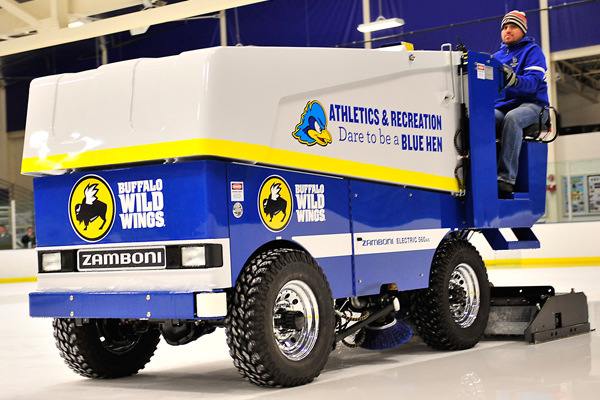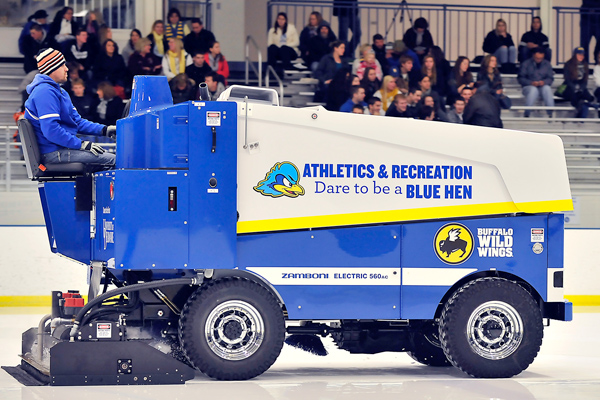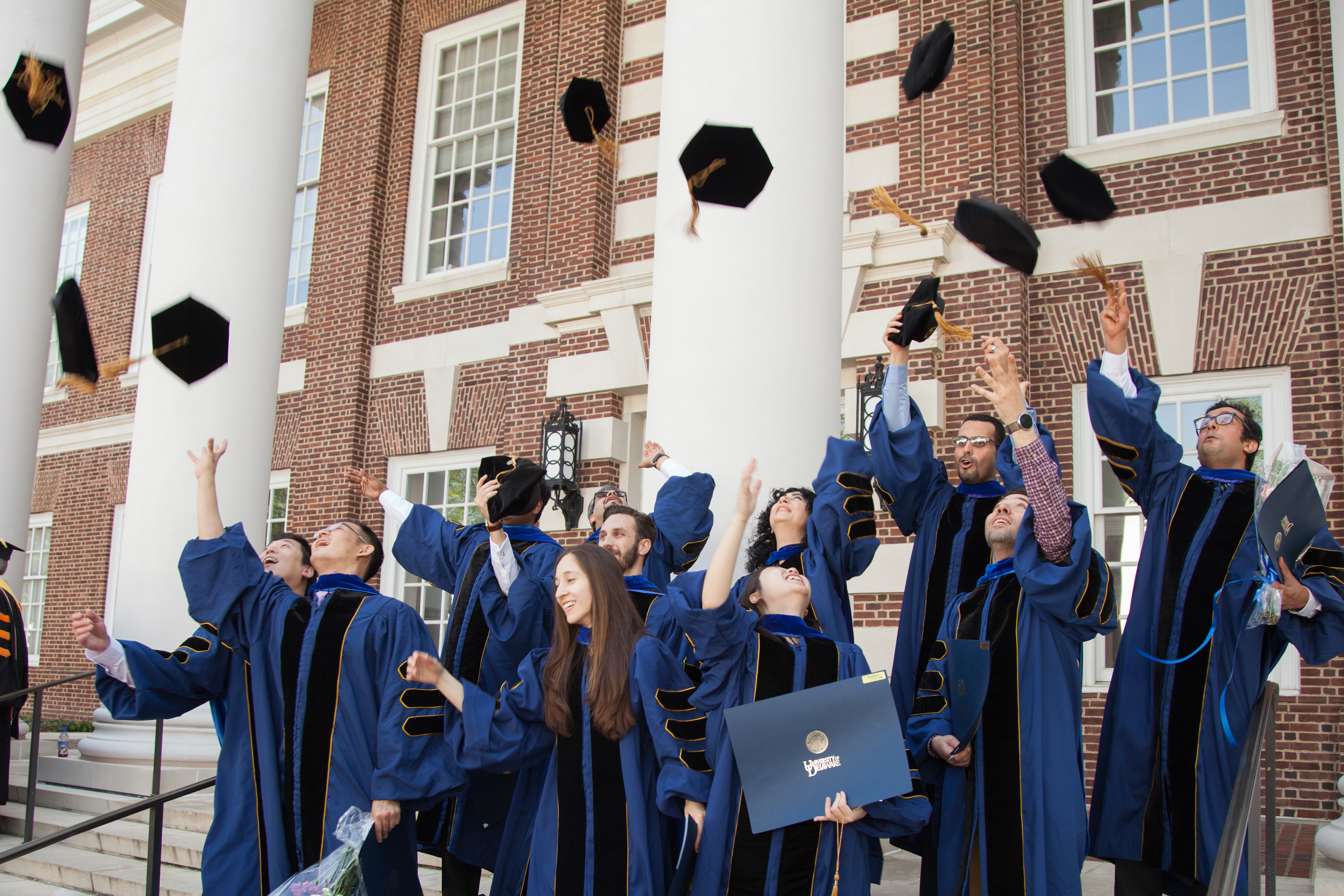


Green ice
UD Ice Arenas now using battery-powered Zamboni to resurface ice
8:42 a.m., Nov. 14, 2012--The University of Delaware Ice Arenas has gone green with the introduction of a new battery-powered Zamboni to resurface ice.
“With the Initiative for the Planet an important part of UD’s Path to Prominence strategic plan, we were exploring ways to provide a more environmentally sound means to resurface ice,” said James Kaden, assistant director of UD Ice Arenas. “The new Zamboni proved to be a perfect option.”
Campus Stories
From graduates, faculty
Doctoral hooding
The new Zamboni 560AC electric ice resurfacer is a technological advancement on the company’s line of battery-operated machines, said Jeffrey Doucette, UD Ice Arenas operations supervisor.
“Almost all of the normal operations required to maintain a perfect sheet of ice has been automated including water control, snow breaker, snow removal augers, and blade height adjustments,” he said, adding that “this allows the operator to be able to perform an ice cut without having extensive knowledge and experience in order to produce a quality ice surface which is valuable to our customers needs.”
The Zamboni model’s new one touch display is part of the new computerized system that allows for more ice cuts in a single day without having to recharge, Doucette said, noting “this is an improvement over the previous battery machines, which were not computer controlled.”
In addition to the advancement in battery charging technology, the machine uses alternating current, or AC, motors instead of direct current, or DC, motors. “AC motors, better battery charging technology, and a load sensing hydraulic system increases efficiency, allowing for longer life span of the batteries and more resurfaces per charge,” Doucette said.









